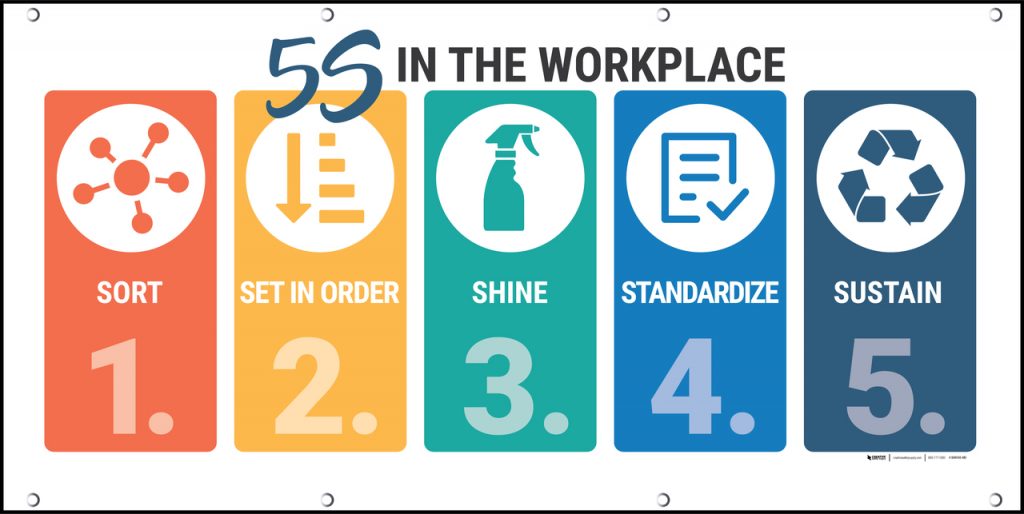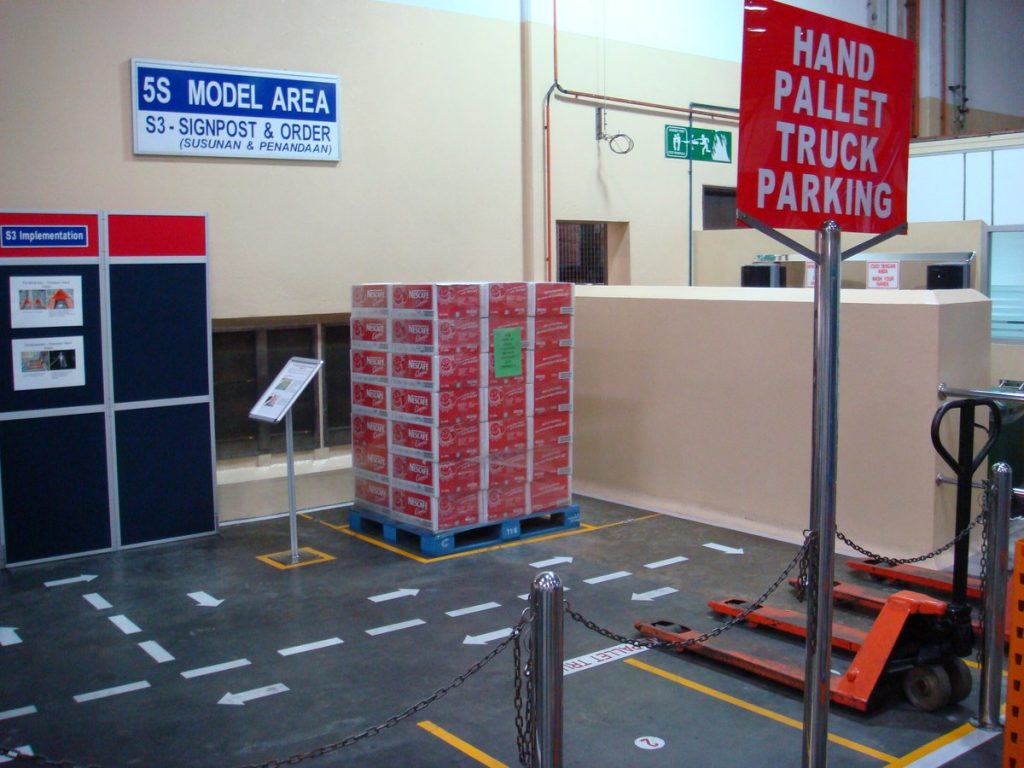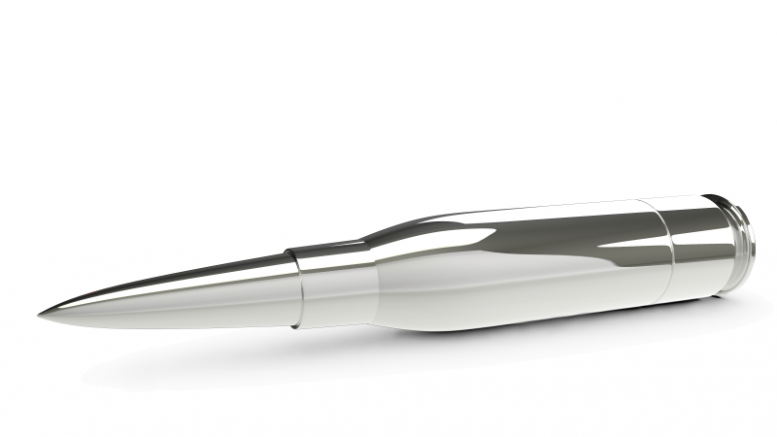Your plant manager goes on a benchmarking trip. “I saw some great practices and a presentation on Lean. I would like to deploy 5S throughout the plant. It will help us improve safety, quality, and productivity. Go make it happen.”
You begin to do your homework. You discover the hype. “5S is a popular and commonly-used tool in Lean manufacturing and is used for the optimization of workplace conditions. Often, 5S is used as a key building block within many lean continuous improvement efforts. This is because the 5S tool not only offers a solid base on which improvements can be established but also gets workers from within the designated area actively involved in improvement initiatives. Commonly, 5S events run for three to five days.”
You identify an external facilitator and establish a plan to conduct events. Thirty events at a pace of one per week and you can have 5S deployed within nine months. You present your plan to the plant manager. The facilitator costs $200,000 to lead events and you ask for an additional $150,000 for materials and supplies. You get the go ahead and get started.

There is a lot of excitement. The plant starts to look better. A lot of things are getting fixed. The weeks speed by as events are completed. Nine months later, you have conducted all 5S events and everything looks great. There are fewer safety near misses, scrap has improved due to less contamination, and morale has improved. It takes less time to do the assigned work. The plant manager organizes a celebration and invites corporate. Everything appears to be going well.
 You are asked to deploy 5S in another plant and leave for 9 months. You complete your assignment and return. You walk onto the shop floor and you can’t believe your eyes.
You are asked to deploy 5S in another plant and leave for 9 months. You complete your assignment and return. You walk onto the shop floor and you can’t believe your eyes.
It looks like the 5S events did not happen. The visual standards are still present, but the shop floor does not match them anymore. What has happened these past 9 months?
Does this sound familiar? Has this happened in your facility? Why didn’t 5S sustain itself? Deployment of 5S to improve business results is not a “silver bullet” or quick fix. Many 5S deployments fail. Why?
The plant leadership team failed to reinforce culture based upon key Lean principles. Many Lean practitioners encourage companies to start their Lean journey with 5S. This is done because it helps to drive a culture of respect for standards, waste elimination and visual management. The plant leadership team must make the commitment to train the first-line supervisors on these principles as they deploy 5S. These principles must also be reinforced daily by the management team. The focus on evolving the culture of a plant must be stronger than the 5S activity to ensure success. This focus does not stop when the events are complete. It must continue without end to sustain the improved business results.
The shop floor did not see the connection between 5S and business results. Many companies jump right into 5S deployment without sharing the “why” or purpose behind their deployment. What business results does the company want to improve? Often, the workplace becomes better organized and cleaner than many people keep their homes. If the purpose of the deployment is not clear, there will be a tendency to drift back to everyone’s personal habits rather than sustaining the needs of the business.
5S event completion was seen as the goal. With an emphasis on completing numerous 5-day events in a matter of months, the shop floor can interpret the business goal as completing all the events in a short period of time rather than achieving sustained business results. Focus on achieving the improved business results within a defined time rather than just the speed of completing the events.
Standards are viewed as static rather than dynamic. The 5S team improves the standards at the work post and implements new standards. This is not a “one and done” activity. Standards that might have been thought to be good may need to change. Customer needs evolve and so must the standards designed to meet these needs. 5S should establish a process to assess and evolve standards on a continual basis as part of the sustain step of the 5S process.
Deployment of 5S is not a “silver bullet.” Without creating a culture based upon lean principles, evolving standards as needed, clearly defining the targets for improved business results, and focusing on their achievement, 5S will not be sustainable. Once a plant starts this journey, there is no end. The result of 5S deployment should be ongoing better business results and a Lean culture of continuous improvement.
 About the Author: Mike Ungar is a Certified FocalPoint Business Coach and Trainer. He has 35 years of experience with Michelin in manufacturing and human resources. Mike is a graduate of the United States Military Academy at West Point and the Clemson MBA program.
About the Author: Mike Ungar is a Certified FocalPoint Business Coach and Trainer. He has 35 years of experience with Michelin in manufacturing and human resources. Mike is a graduate of the United States Military Academy at West Point and the Clemson MBA program.


Be the first to comment on "Looking for a “Silver Bullet” with 5S"